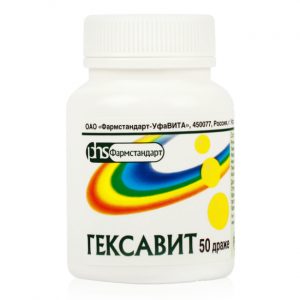Description
Release form
Solution for infusion
Pharmacological action
Glucose solution is involved in various metabolic processes in the body, enhances redox processes in the body, improves the antitoxic function of the liver, enhances the contractile activity of the heart muscle. An infusion of dextrose solutions partially compensates for the water deficit. Dextrose, entering the tissues, phosphorylates, turning into glucose-6-phosphate, which is actively involved in many parts of the body’s metabolism.
5% dextrose solution has a detoxifying, metabolic effect, is a source of valuable digestible nutrient. With the metabolism of dextrose, a significant amount of energy is released in the tissues necessary for the life of the body.
5% dextrose solution is isotonic. The energy value of a 5% dextrose solution is 200 kcal / l, the approximate osmolarity of a 5% solution is 278 mOsm / l, 10% solution – 555 mOsm / l
Pharmacokinetics
Dextrose is metabolized through pyruvate and lactate to carbon dioxide and water with the release of energy.
Absorbed completely by the body, the kidneys are not excreted (the appearance in the urine is a pathological sign).
Additional pharmacokinetic properties are determined by the added drugs
Indications
Hypertensive dehydration
parenteral nutrition
study of renal function in dehydrated patients (10% solution).
Composition of
Active ingredient: dextrose monohydrate 10 g.
Dosage and administration
Intravenously, drip. A 5% solution is administered at a maximum rate of 7 ml / min (150 cap / min 400 ml / h), the maximum daily dose is 2000 ml 10% – up to 3 ml / min (60 cap / min), the maximum daily dose is 1000 ml. In / in, jet – 10-50 ml of 5 or 10% solutions.
In adults with normal metabolism, the daily dose of glucose administered should not exceed 4-6 g / kg, i.e. about 250 450 g / day (with a decrease in metabolic rate, the daily dose is reduced to 200 300 g), while the volume of injected fluid is 30 40 ml / kg / day.
For parenteral nutrition, along with fats and amino acids, 6 g of glucose / kg / day are administered on the first day, followed by up to 15 g / kg / day. When calculating the dose of glucose with the introduction of 5 and 10% solutions, it is necessary to take into account the admissible volume of injected fluid: for children with a body weight of 2-10 kg – 100-165 ml / kg / day, 10-40 kg – 45-100 ml / kg / day
Speed of administration: in the normal state of metabolism, the maximum rate of administration to adults is 0.25-0.5 g / kg / h (with a decrease in metabolic rate, the rate of administration is reduced to 0.125-0.25 g / kg / h). In children – no more than 0.5 g / kg / h, which for a 5% solution is about 10 ml / min or 200 drops / min (20 drops = 1 ml).
For a more complete absorption of glucose administered in large doses, insulin is prescribed at the same time at the rate of 1 U of insulin per 4-5 g of glucose. Diabetes patients with the introduction of the drug must control the glucose in the blood and urine.
Storage conditions
In the dark place at a temperature of 5-30 ° C.
Expiration
3 years
Active ingredient
Dextrose
Terms of delivery from
pharmacies Prescription
dosage form
infusion solution
Eskom NPK, Russia


